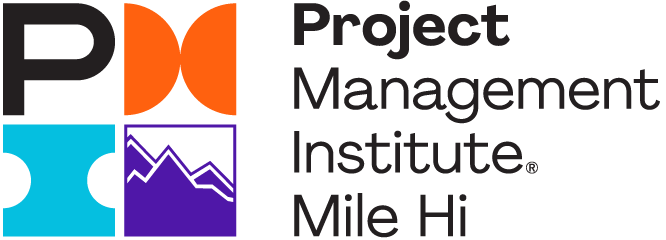30 March 2022 at 10:00PM
Competing in a Digital Economy
I was recently asked to deliver a presentation for the Regis PMI South March 23 Roundtable and share how project managers can establish business agility in their organizations by applying industry-proven Lean-Agile scaling strategies. So, although I did not create a title for the presentation, I believe one of my subsections accurately reflects the primary topic – how to compete in our modern digital economy.
The Waterfall Tradition
To give you some background, the software development industry has rapidly evolved over the 35 years I have been in this industry. When I started out, the accepted philosophy was that the traditional project management model, called Waterfall in the software industry, would work equally well when managing software development projects. The waterfall model is characterized as a plan-driven approach that implements a relatively strict linear-sequential development process through traditional phases: Concept, Requirements, Design, Build, Test, and Deploy.
The traditional project management model works well in industries where requirements are well understood and not likely to change, especially when change is cost- or schedule-prohibitive. For example, after starting construction, it’s likely cost-prohibitive to add additional floors to a skyscraper, change the length or beam of a ship, or reroute a freeway.
Software Tools and Methods
But the software industry is very different and is affected by very different business considerations. Businesses run their business with software. But the dynamics of the business can change overnight due to competitive pressures. Additionally, our customers can be fickle and change their minds regarding their requirements. They might not know what they want until they see a working prototype of a software application. As a result, the software industry created new methods and tools to support its customers better.
Starting in the 1980s, software tools companies began to create computer-aided software engineering (CASE) tools to graphically model business and user requirements. In the 1990s, the software tool vendors started creating integrated development environments (IDEs) and rapid application development (RAD) tools to accelerate software development. However, most significantly, in 2001, a group of software engineers and consultants got together and authored the Manifesto for Agile Software Development to document the values and principles necessary to support their customers properly. These engineers presented a new approach to software development that some called “lightweight” software development methodologies.
The Agile and Lean Models
The Agile methodologies applied an iterative and incremental development (IID) model that significantly accelerated the pace of delivery, allowing more frequent deployments of new functionality. In addition, Agile-based developers actively sought customer reviews throughout the software development life cycle (SDLC) to solicit customer feedback and make changes frequently and rapidly. Finally, the agile practices help eliminate many bug-fix issues that can delay production deliveries when testing is a late-stage activity, scheduled at the end of the SDLC and spanning thousands of lines of code.
But before Agile came along, Lean production concepts evolved, first in manufacturing but also adopted across other industries to accelerate the flow of value-based deliveries by eliminating constraints that cause bottlenecks, delays, excess work in progress (WIP), and other wastes that do not add value from the perspectives of our customers. Though Lean and Agile practitioners promote similar concepts – such as adding customer-centric value and continuous improvements, their original goals differed. However, today, we see a merging of both concepts in Lean-Agile Frameworks, such as Disciplined Agile, SAFe, and Amplio.
How to Compete in the Digital Economy?
Competing in a digital economy means organizations must reimagine how they deliver value to their customers. The digital disruptors won. For example, think how Amazon, Netflix, Airbnb, Uber, Tesla, and the many social media firms such as Facebook and Etsy have transformed how we communicate, share news, promote, and sell our products and services. They have proven they can compete and take away business in any industry head-on against the entrenched leaders, no matter the size or length of times those leaders have been around.
But change is hard. And humans will resist change if they fear it will alter the way they work or put their jobs and careers at risk. On the other hand, people generally want to be involved in something that is viewed as successful. So the best strategy is to find the innovators in your organization who want to effect change for the good. Start with low-risk but high-reward projects, and use Lean-Agile processes to make them successful. Promote every success, and repeat the pattern on new programs. Over time, the early adopters, early majority, late majority, and even the laggards will join in when the see the success others are having, and recognize there is more risk by not joining in the new ways of working.
Still, some of the current Lean-Agile methodologies appear complex, difficult to implement, and expensive to employ on an enterprise scale. This is the reason my partners and I have evolved Amplio. But that is a discussion for another blog.
For those PMI Mile Hi Chapter members who would like to learn more about Lean-Agile practices, you can watch the Roundtable discussion here or visit my website at https://www.commandresults.com/, or contact me directly at gary@commandresults.com.
Additional Resources
Interested in learning more about topics like this one? Check out upcoming events on our chapter calendar. Sign up for one of our upcoming meetings, roundtables, or workshops – a selection of which are virtual. Earn your PDUs through PMI Mile Hi Chapter!
About the Author
Cecil ‘Gary’ Rupp is a 35-year veteran in the software industry - including executive management, program management, and management consulting roles. He is also the author of four books on software development and modern Scaled-Scrum, DevOps, and Value Stream Management (VSM) practices. Through his company, Command Results, Gary helps his clients apply Lean-Agile operating models and related practices to deliver customer-centric value through software and to compete profitably in our modern digital economy.



